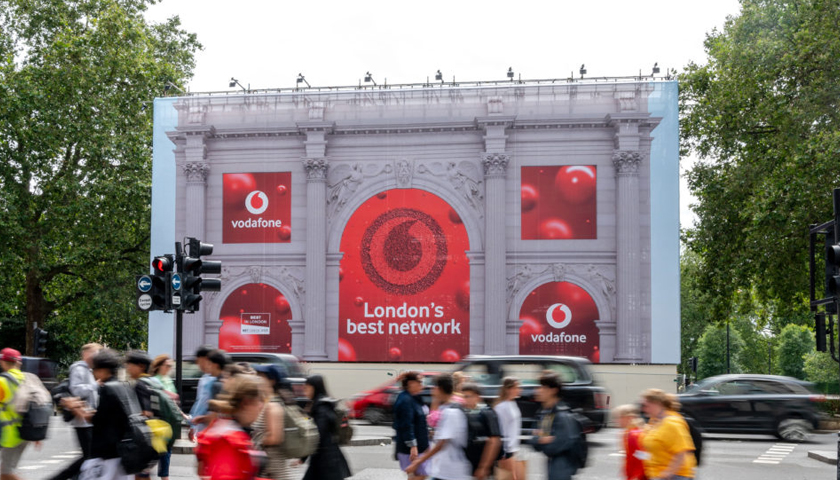On the 6th June Vodafone announced new global rules intended to prevent its advertising from appearing within outlets focused on creating and sharing hate speech and fake news. The update to the Group’s existing policy on advertising transparency and integrity is set out below. The new rules – which are now in effect – include Vodafone’s definition of hate speech and fake news for the purposes of determining whether or not a particular outlet should carry Vodafone advertising. There is no change to Vodafone’s policy on network access to the outlets in question.
Background: the digital advertising market
Over the last decade, the rapid growth of digital advertising has provided major brands such as Vodafone with extensive opportunities to engage directly with consumers and businesses online. More recently, the advertising industry and digital advertising providers such as Google and Facebook have developed automated advertising technologies that use algorithms to deliver digital advertising to targeted demographic categories of internet user, serving ads dynamically within individual websites and social media channels as those users browse.
While automated advertising is a powerful tool – allowing advertisers to focus their investment on specific market segments across almost all digital properties – in a small minority of instances it can also lead to unintended and potentially harmful outcomes including advertising appearing next to offensive content. Additionally, automated advertising technologies can have the effect of generating revenue for outlets focused on hate speech and fake news.
Advertisers such as Vodafone therefore risk their brands being marketed within outlets that are fundamentally at odds with their values and beliefs as a company while inadvertently providing a source of funding for those outlets.
Vodafone Group Chief Executive Vittorio Colao said: “Hate speech and fake news threaten to undermine the principles of respect and trust that bind communities together. Vodafone has a strong commitment to diversity and inclusion; we also greatly value the integrity of the democratic processes and institutions that are often the targets of purveyors of fake news. We will not tolerate our brand being associated with this kind of abusive and damaging content.”
Vodafone’s global rules
Vodafone already has a number of rules designed to ensure transparency and integrity in the allocation of the Group’s global advertising budget. For example, Vodafone’s current policy expressly prohibits using commercial engagement with a media outlet as leverage to influence editorial opinion regarding Vodafone’s products, services or corporate activities, stating that “Vodafone or its agents must neither threaten to withdraw advertising from those who criticise Vodafone editorially nor must it imply in any way that a decision to initiate or increase advertising spending with a particular publication would be contingent upon more favourable editorial treatment”.
The new rules focused on hate speech and fake news outlets are implemented by means of a whitelist-based approach using content controls implemented by Vodafone’s global agency network (led by WPP), Google and Facebook. Those controls ensure that Vodafone advertisements are only served within selected outlets identified as highly unlikely to be focused on harmful content. These measures will be reviewed regularly by Vodafone and its global agency network to ensure that the selection of outlets for whitelisting is appropriate and neither too broad nor too narrow.
The new rules are as follows.
Blocking advertising on hate speech and fake news outlets
Vodafone, third parties acting on its behalf and its advertising platform suppliers (including, but not limited to, Google and Facebook) must take all measures necessary to ensure that Vodafone advertising does not appear within hate speech and fake news outlets. We define these as outlets whose predominant purpose is the dissemination of content that is:
- deliberately intended to degrade women or vulnerable minorities (“hate speech”); or
- presented as fact-based news (as opposed to satire or opinion) that has no credible primary source (or relies on fraudulent attribution to a primary source) with what a reasonable person would conclude is the deliberate intention to mislead (“fake news”).
Note that:
- the term “outlet” encompasses all social media, digital, print and broadcast channels, sites, apps, programmes and publications;
- the term “advertising” encompasses all forms of brand promotion including advertising, advertorial, sponsorship and co-marketing arrangements; and
- these mandatory rules apply to all Vodafone brands, subsidiary brands, joint venture brands and sub-brands.
The hate speech and fake news definitions, above, apply to an outlet as a whole. The test is whether or not the predominant purpose of the entire outlet is to communicate and share this kind of harmful material. An outlet that carries some hate speech or fake news content – but where the majority of content disseminated would not meet the tests above – must not be categorised as warranting exclusion from advertising whitelists on hate speech/fake news grounds.
Our thoughts
Vodafone become one of the first major companies to create and publicise rules such as this and I think following on from the Ad Placement scandals which hit YouTube and Google earlier this year this is a good idea. I do, however, wonder if it might need tightening up as it stands if a company has a site which is 49% hate speech or fake news it would still get through this test, I wonder if something like 10% might make a lot more sense, especially as many of the sites which perpetrate fake news give themselves credibility by mixing their fake stories in with real ones, but it’s a step in the right direction.
Links
http://www.vodafone.com/content/index/media/vodafone-group-releases/2017/advertising-block.html

